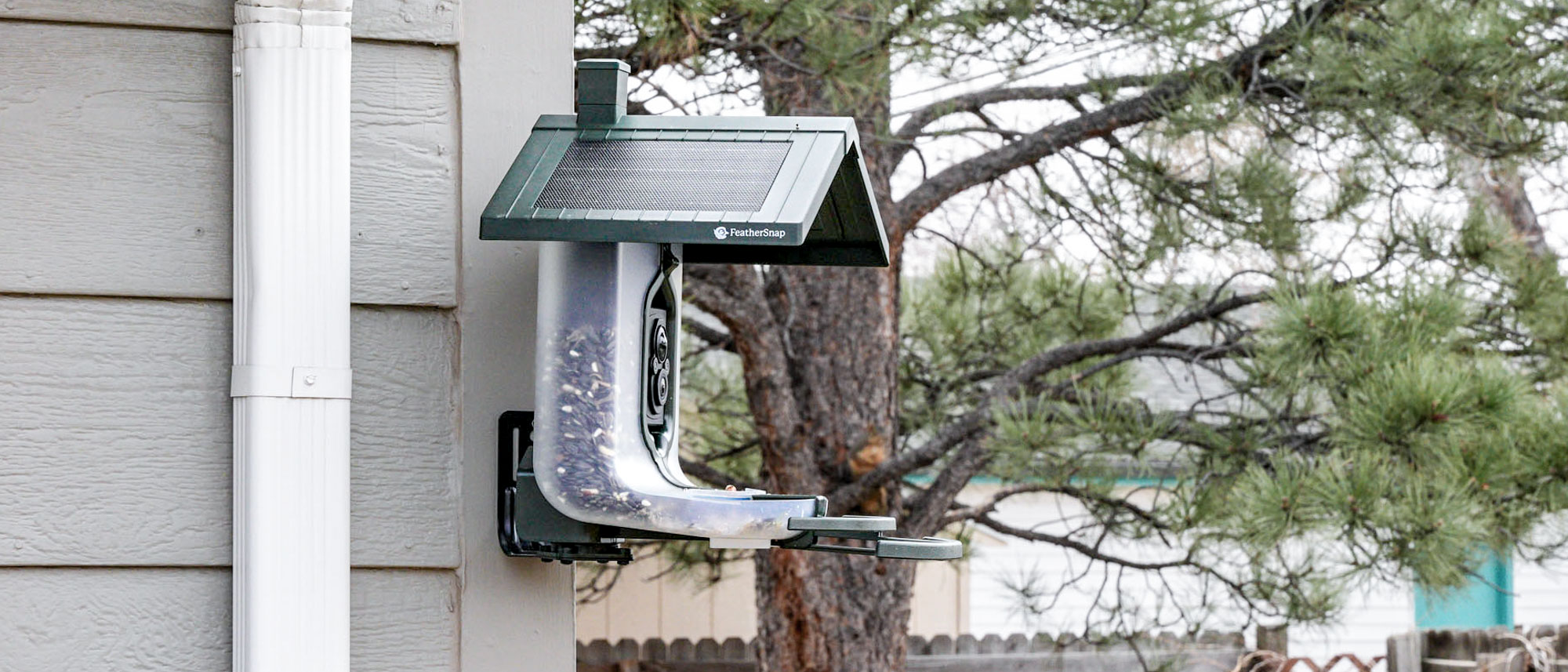Tom's Guide Verdict
The FeatherSnap Scout has held my attention for months now, and it’s a fun and easy way to engage with wild birds close-up. The camera takes clear images and video, too, though not nearly as clear and bright as what Bird Buddy can accomplish. The AI tool integrated into the app isn’t super accurate, though, so you’ll need to do a bit of leg work to accurately identify birds that visit your feeder.
Pros
- +
Super easy setup
- +
Solar panels mean no battery worries
- +
Fun app with lots of extras
- +
Lots of seed capacity
Cons
- -
App could use some refining
- -
Extra features require a fee-based subscription
- -
AI doesn’t have a great track record of correctly identifying birds
Why you can trust Tom's Guide
Price: $179.99
Subscription: $6.99/month or $60 annually
Seed capacity: 4.2 cups per side (8.4 cups total)
Weight: 3.3 pounds unfilled
Connectivity: WiFi 2.4GHz
Power: Solar; USB-C connection optional
Operating temperature: -20 degrees F to 130 degrees F
Camera: Removable, 4MP resolution with wide field of view
Storage: 5GB internal storage; optional Micro SD slot built-in
I’ve been keeping two resident birds well-fed this spring thanks to FeatherSnap’s Scout Bird Feeder. We occasionally get other visitors, but my two main friends stop by every day, several times a day. I know this because FeatherSnap makes it super easy to track my feathered visitors, categorize them, save videos and photos of them, and learn more about them.
It’s been addictive fun to check the FeatherSnap app several times a day to see who’s been munching at the feeder. I love seeing wildlife in the backyard and learning more about various bird species. While the AI features included in the app have been hit or miss, the rest of the FeatherSnap experience has been wonderful. It’s a great option for casual bird enthusiasts and more serious birders looking to identify and track various species in their locale.
Feathersnap Scout Bird Feeder: Price and availability
The FeatherSnap Scout costs $179.99 and is available for purchase now on FeatherSnap’s website.You can buy the Scout and a Wi-Fi subscription on FeatherSnap’s website to get up and running more quickly. The Wi-Fi subscription gives you additional features, including AI bird identification, access to FeatherSnap’s Bird Book, Snap Rush Mode, and more. The Wi-Fi plan costs an additional $60 annually or $7 a month.
You can also purchase the Scout from various online retailers including Amazon, Chewy, Bass Pro Shop, and Lowe’s.
Feathersnap Scout Bird Feeder: Design
The plastic body of the Scout includes a roof with solar panels built in. These panels keep the removable camera charged so you don’t have to remove it and charge it manually via USB-C (though you can, if you live in a place where sunlight isn’t sufficient to keep the unit charged).
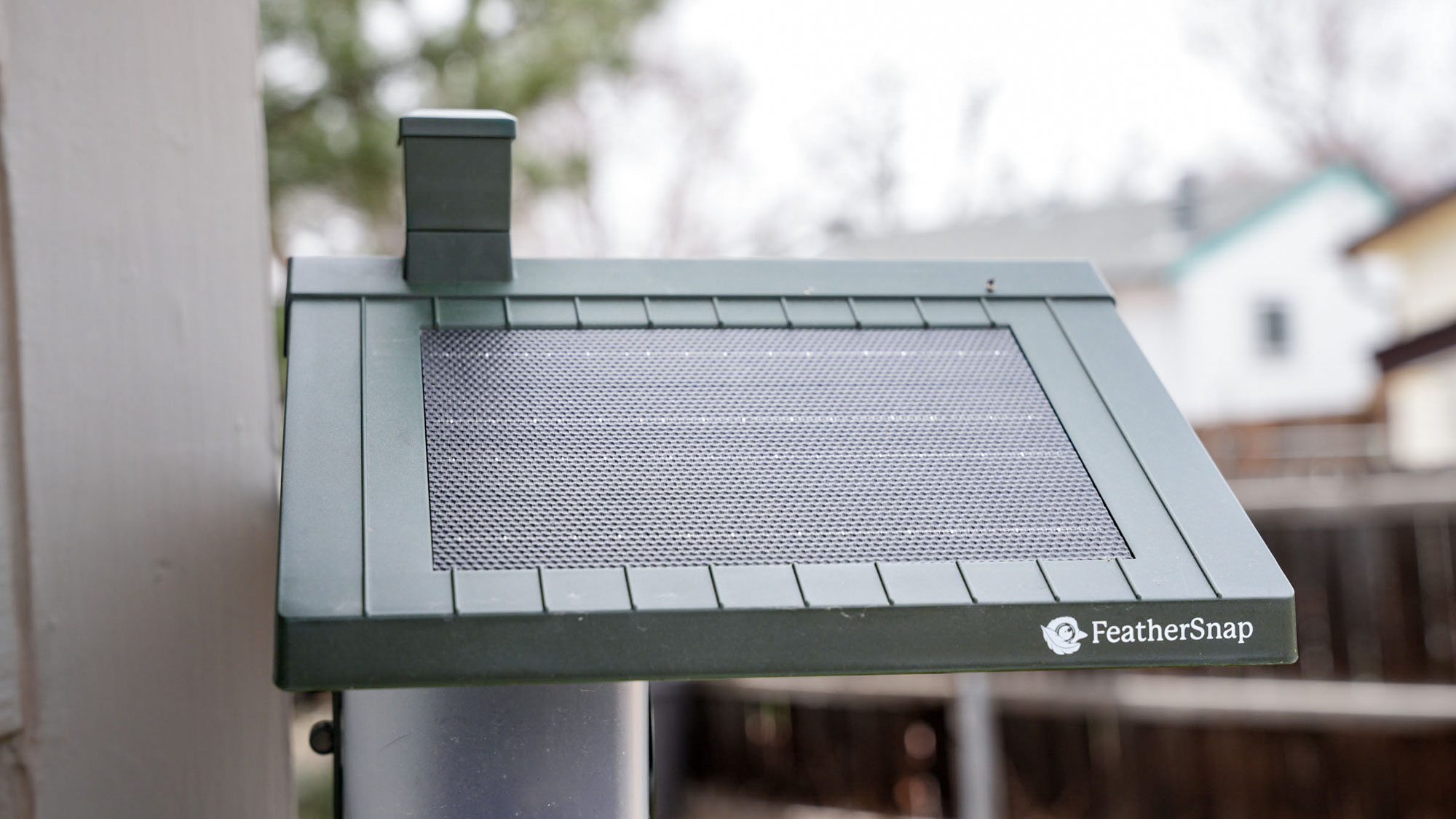
The roof pivots to allow you to fill the main body with bird seed of your choice. The seed gravity-feeds into a bottom tray where birds can perch and munch. It’s positioned such that the camera points directly at your visitors and takes photos of them automatically.
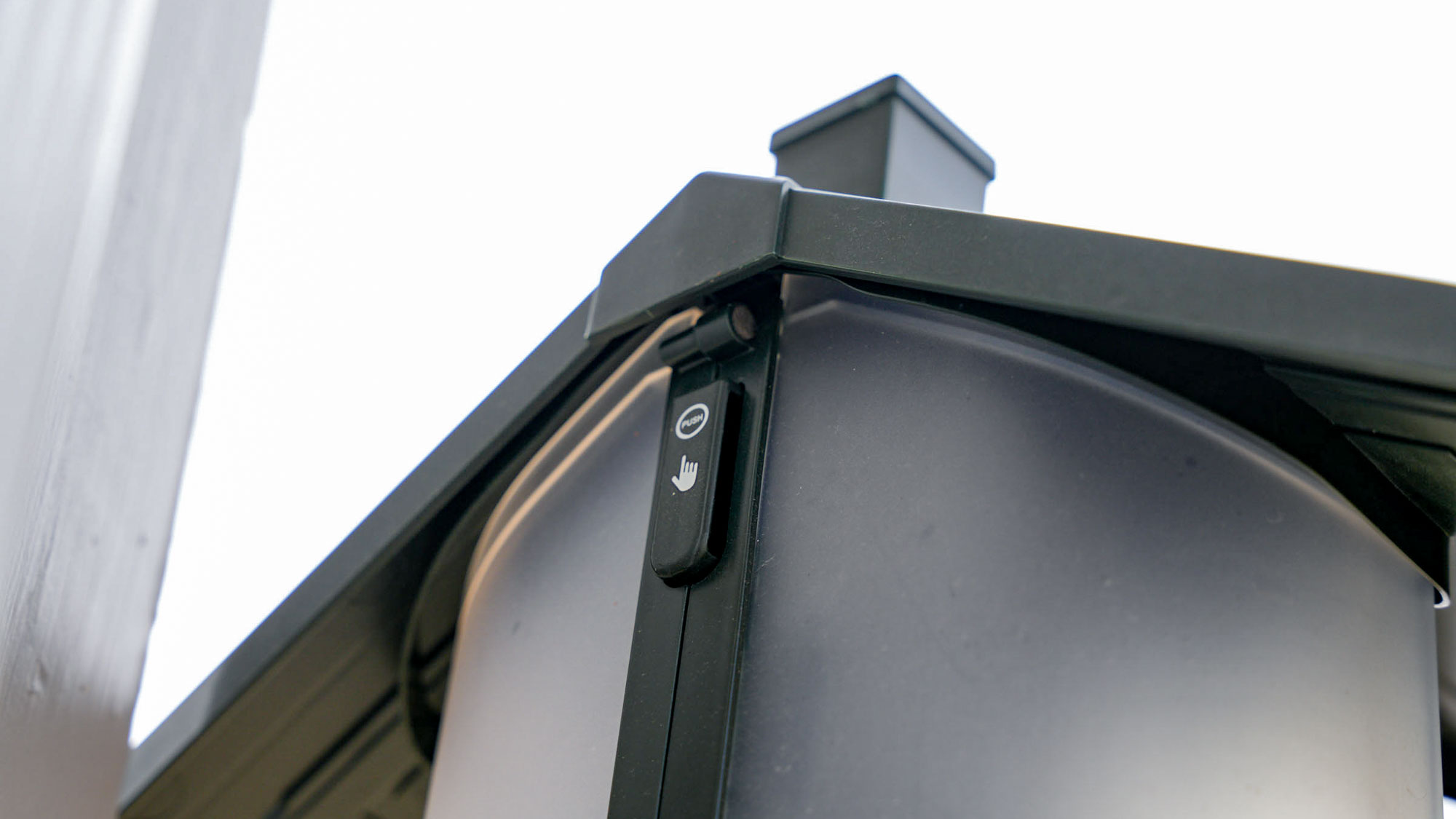
Two extendable perches create more room for birds at busy feeders. You can tuck these into the main body if you prefer.
Get instant access to breaking news, the hottest reviews, great deals and helpful tips.
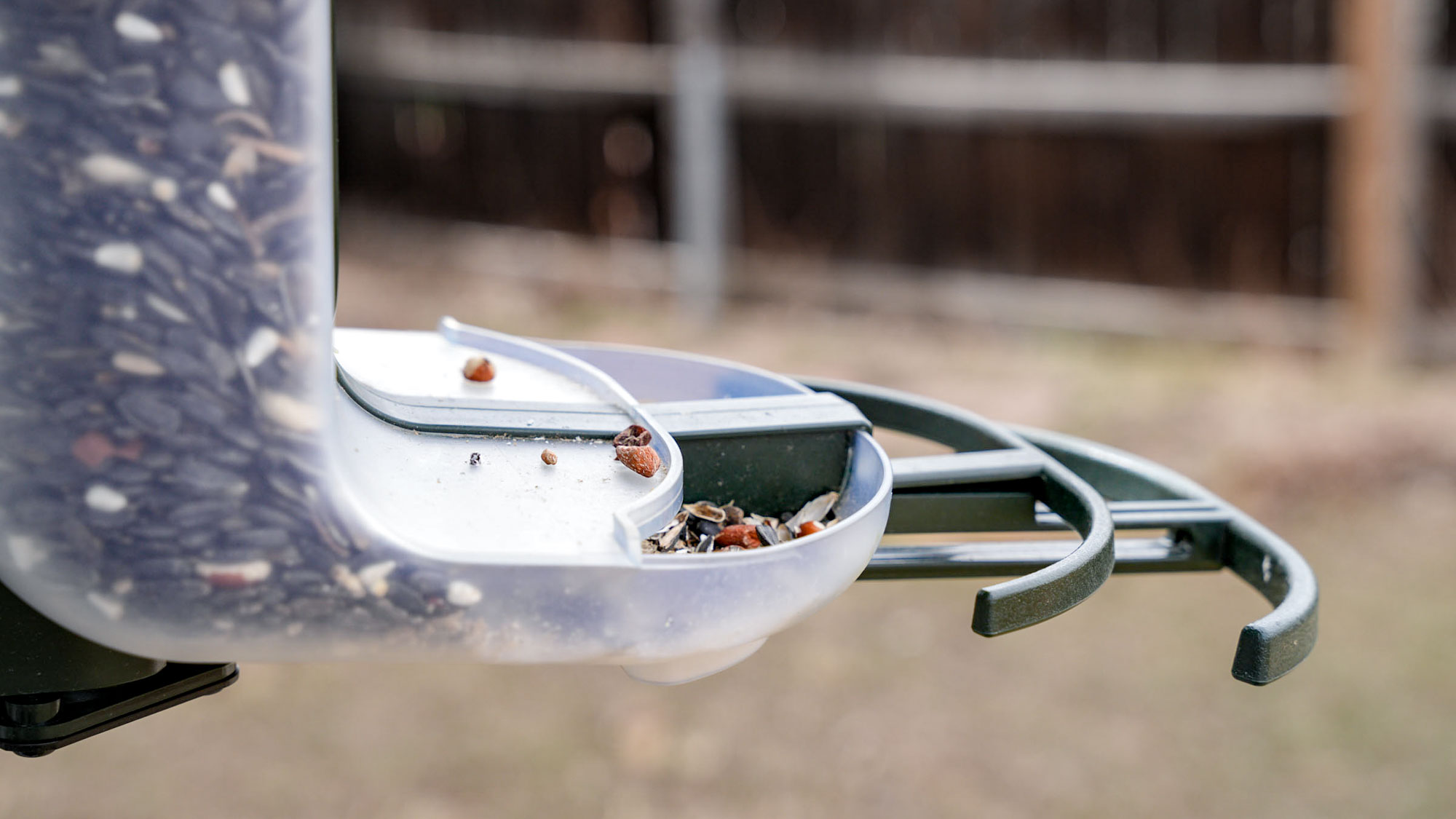
The entire feeder mounts on a metal bracket you screw into a solid mounting surface. The feeder mates to a vertical plastic post, which allows you to rotate the feeder to find the optimal position. This comes in handy when you’re trying to find a good backdrop that highlights your bird visitors. FeatherSnap also includes a stabilization strap to help open up more mounting opportunities.
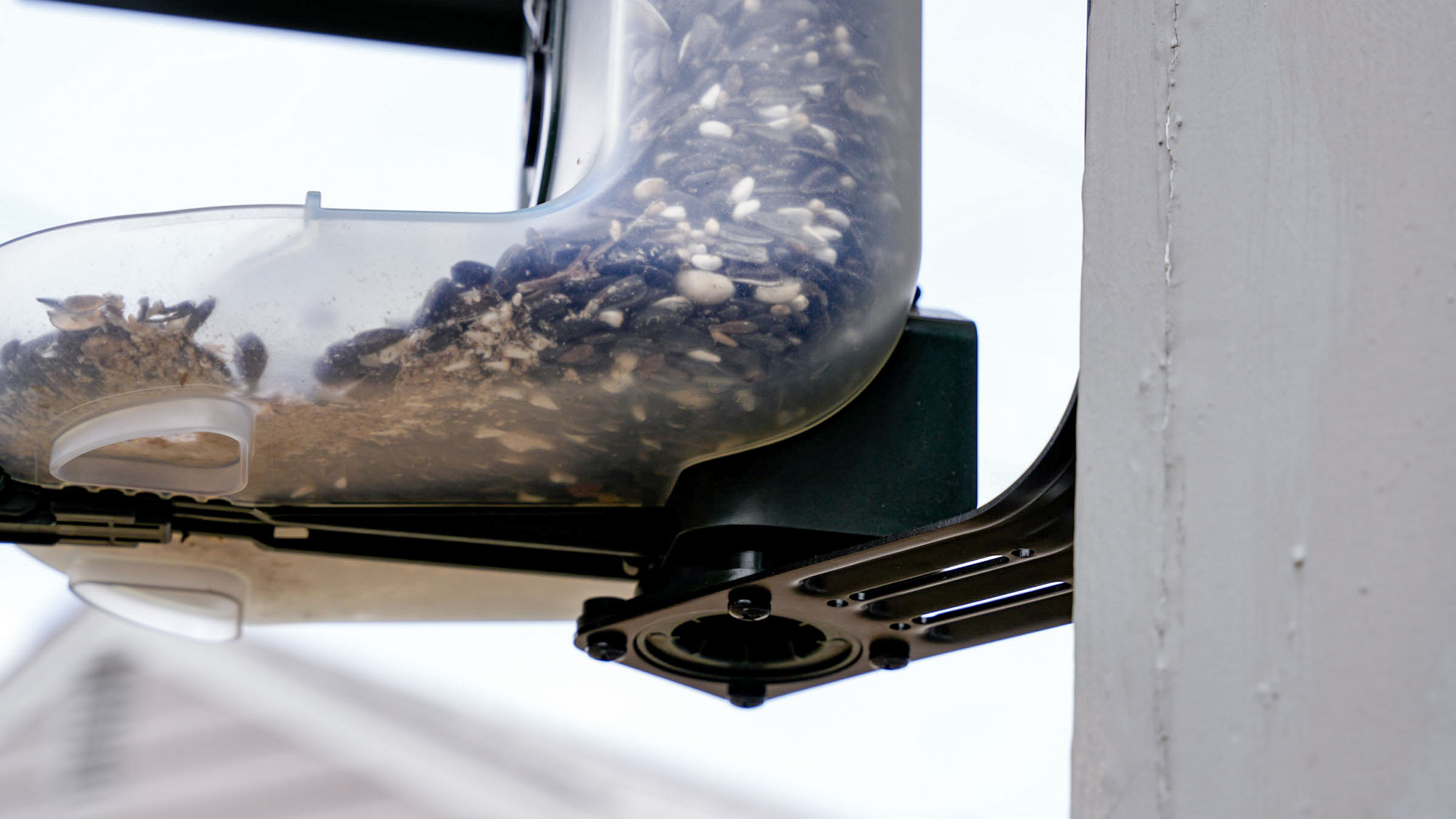
The removable camera pops out from the main body of the feeder easily. It has a resolution of 4 megapixels (1080p video) with a 170-degree wide field of view (90 degrees vertically) to capture birds that prefer the corners of the frame rather than center stage.
The Scout features Wi-Fi connectivity on a 2.4GHz band. Much of what you’ll love about the Scout will get beamed to the FeatherSnap app via Wi-Fi. You’ll see your visitors, be able to save photos, request videos, and much more. More on that below.
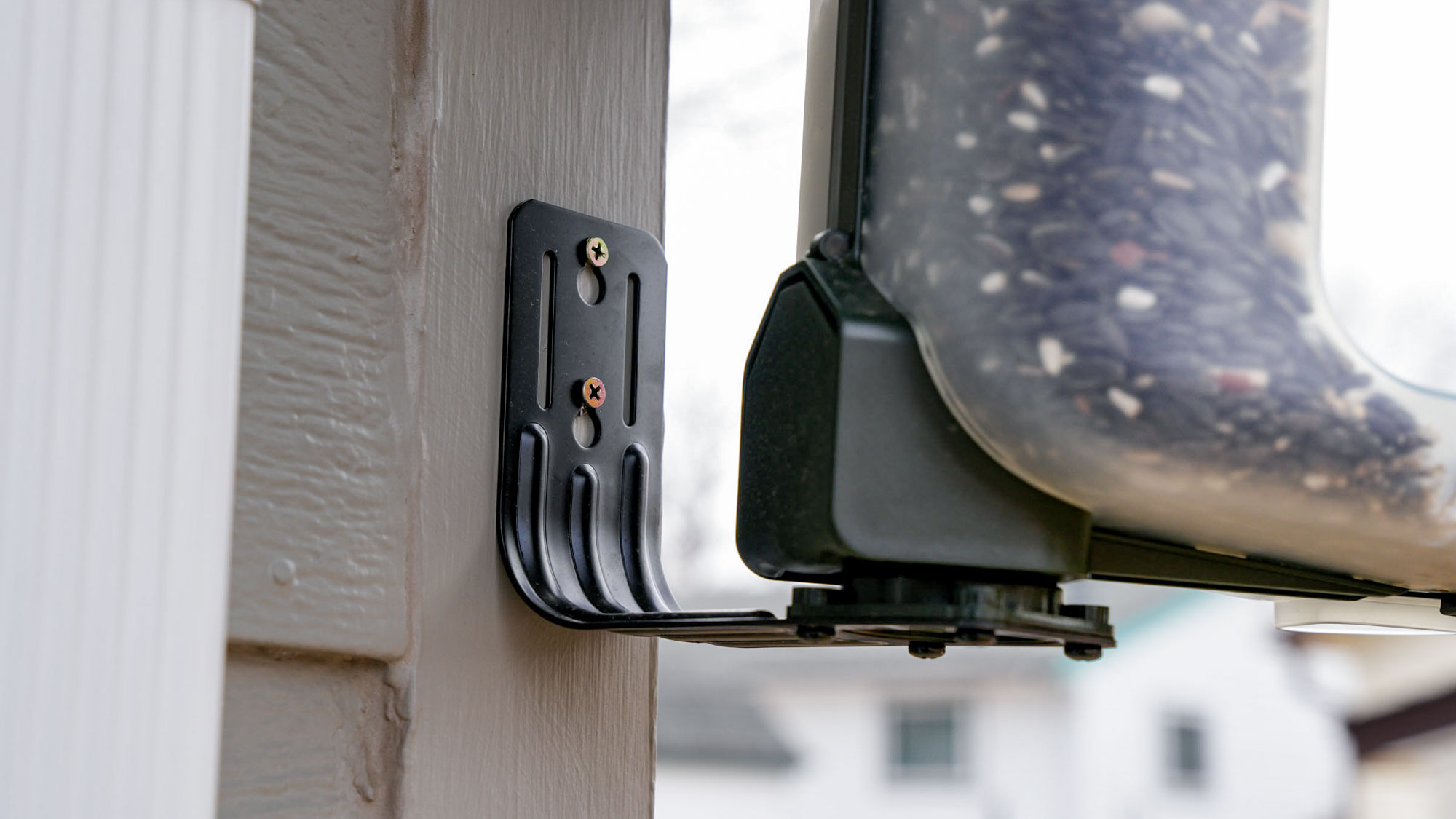
Overall, the feeder weighs about 3 pounds empty and about twice that filled. You can get just under 9 cups of bird seed in the feeder.
Feathersnap Scout Bird Feeder: Camera specs and settings
The camera detects motion within ten feet of the feeder and shoots at a focal range of 4-24 inches. It’s a 4-megapixel resolution camera, with a 170-degree-wide field of view. According to FeatherSnap’s website, the photos and videos are high definition, though that’s a fairly vague term.
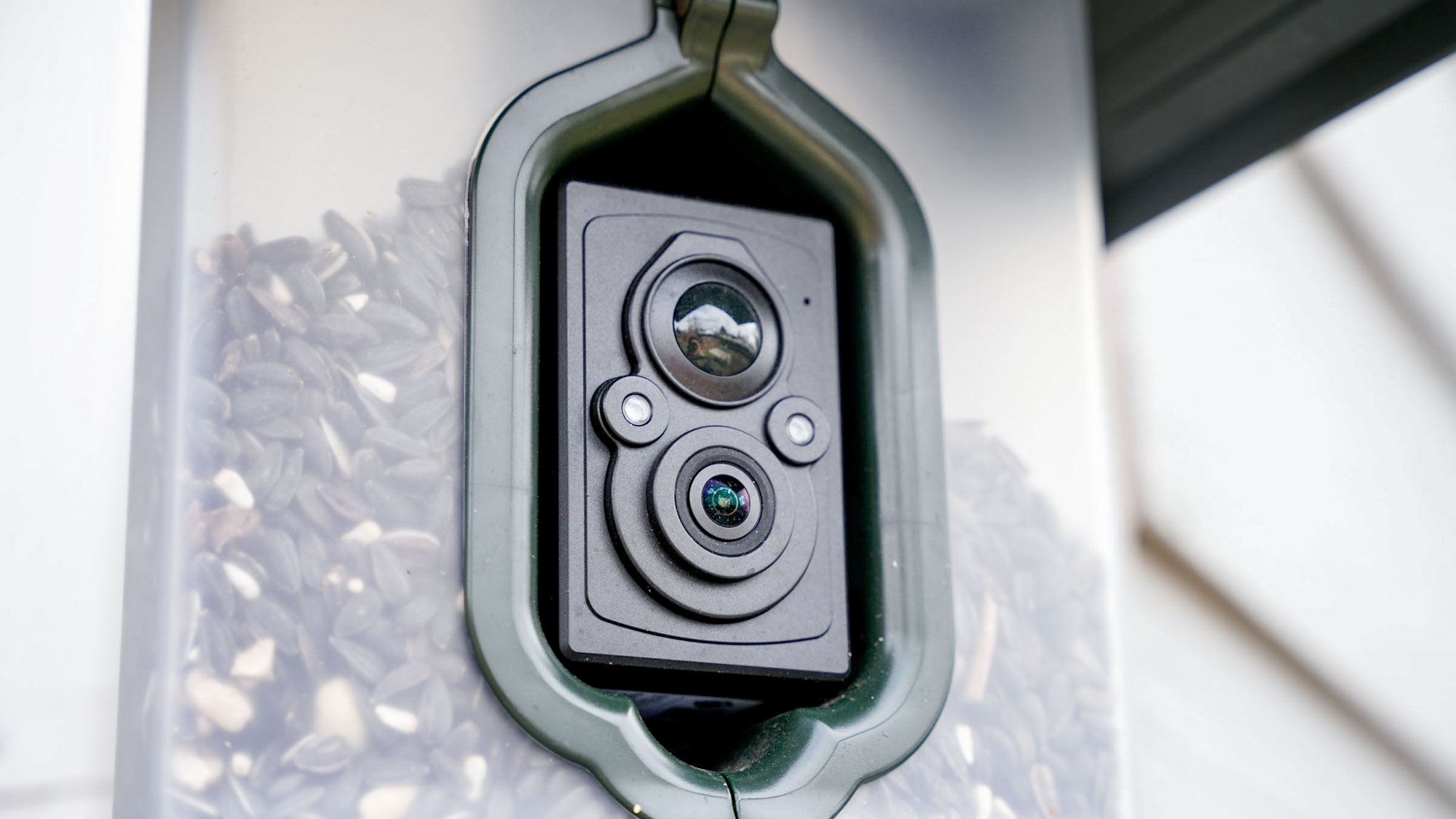
So let’s clarify. Video shoots in 1080p and photos default to dimensions measuring 1280x720. And there’s an ambient light sensor to adjust the camera for even more clarity. The user manual notes that the camera includes an infrared LED flash, but I have not seen evidence of this being used in my videos and photos. Perhaps it’s subtle, or I’m just not seeing its effects, but otherwise, it does not appear to have activated yet in any of my snaps.
To get the most out of the camera’s capabilities, FeatherSnap recommends placing your feeder in a sunny location. The manual also notes you should avoid facing the unit to the south, as this will expose it to sunlight glare that can activate the snap recording while no birds are actually at the feeder.
Feathersnap Scout Bird Feeder: Testing and positioning the feeder
The first thing I learned, very quickly, about the FeatherSnap Scout is how important it is to position it properly. You’ll want to choose a location that’s easy to access so you can refill the feeder when necessary, but you’ll also need to consider a few other key factors:
- Positioning in a location where squirrels can’t access the Scout
- Positioning somewhere the sun will hit the solar panels frequently
- Positioning so the birds the camera captures aren’t always backlit (this makes the birds appear dark)
- Positioning the Scout in a low-foot-traffic area
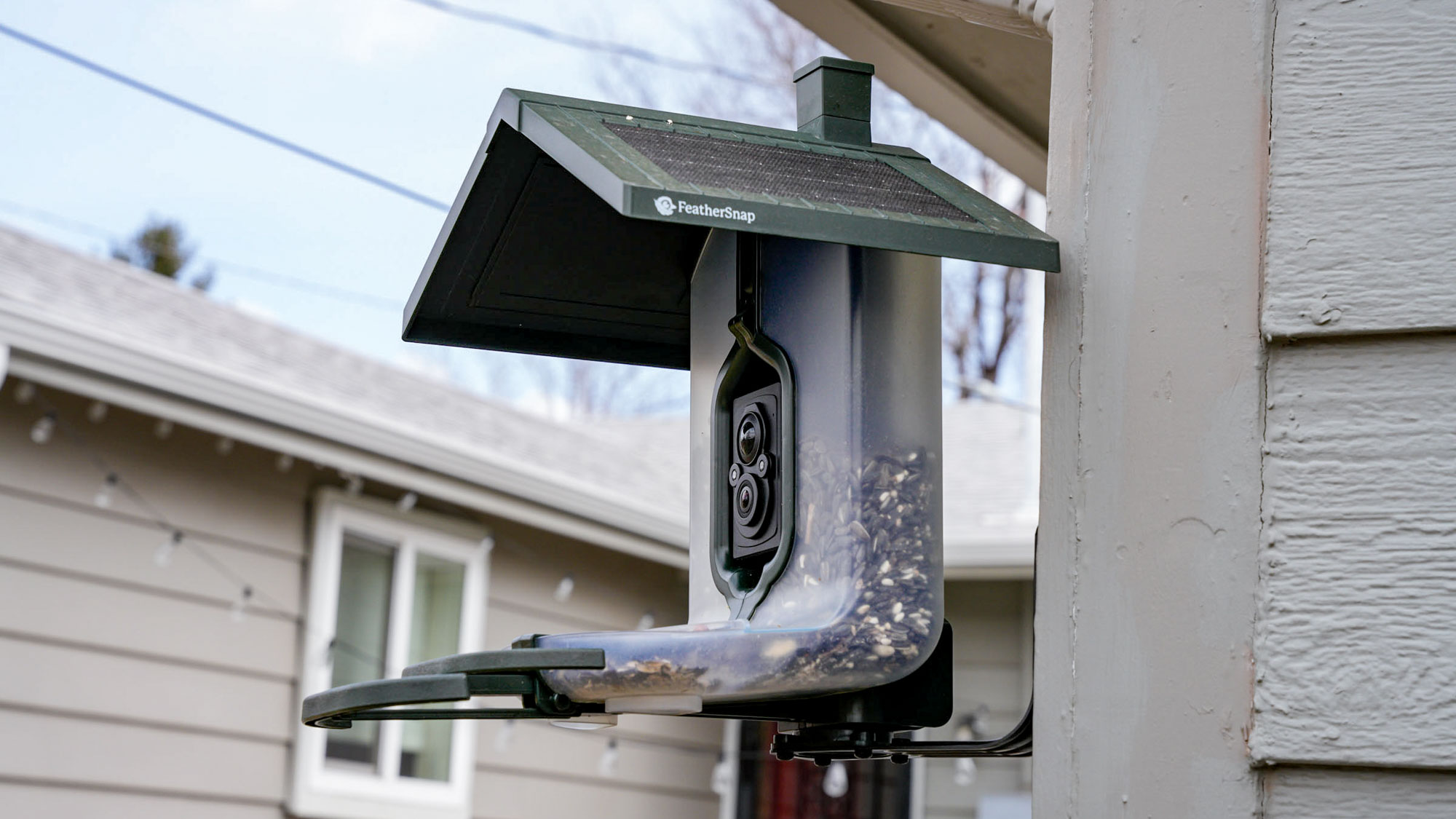
That last factor was one that immediately affected the usefulness of the Scout for me. I first positioned it just outside my back door, thinking I could look at the birds from my kitchen window. That was true, but it also meant the camera snapped a picture of anyone coming and going from the back door of my house — including my dog. I suppose if I wanted to use this feeder as an outdoor security camera, this would have been a great position. But for bird documentation, I needed to relocate.
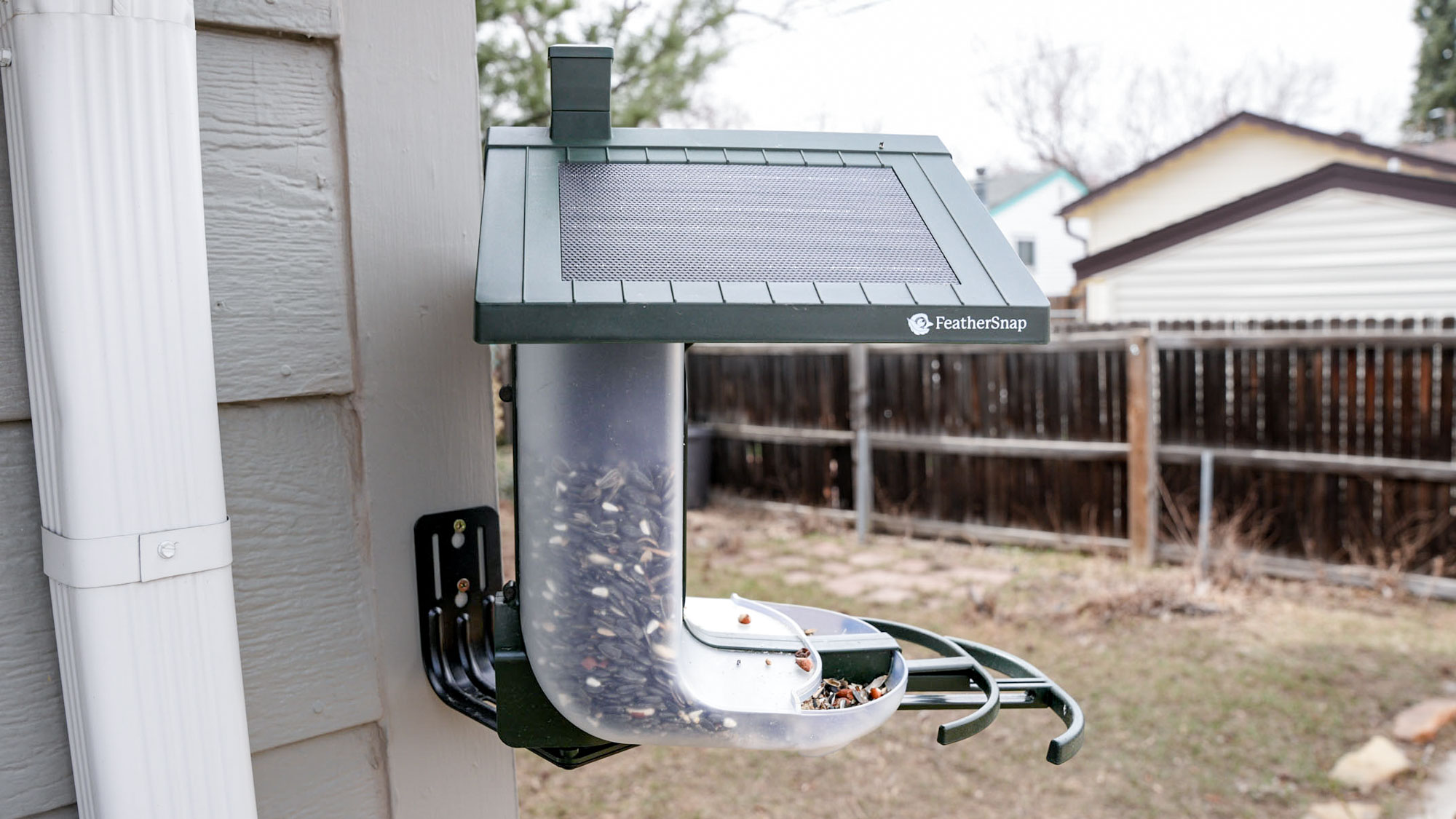
So I moved the Scout to the back of my garage, pointing caddy-corner out at the back part of my yard. This proved ideal for preventing accidental snaps — though I still get a few shots of my dog sniffing around. This positioning was also great for preventing squirrels and other non-bird-critters from accessing the feeder.
At certain times of day, however, the intense Colorado sun shines on my yard, but not on the feeder itself, which sits beneath the eave of my garage in shade. So for much of the day, the birds in view of the camera are backlit. This makes the image suffer quite a bit.
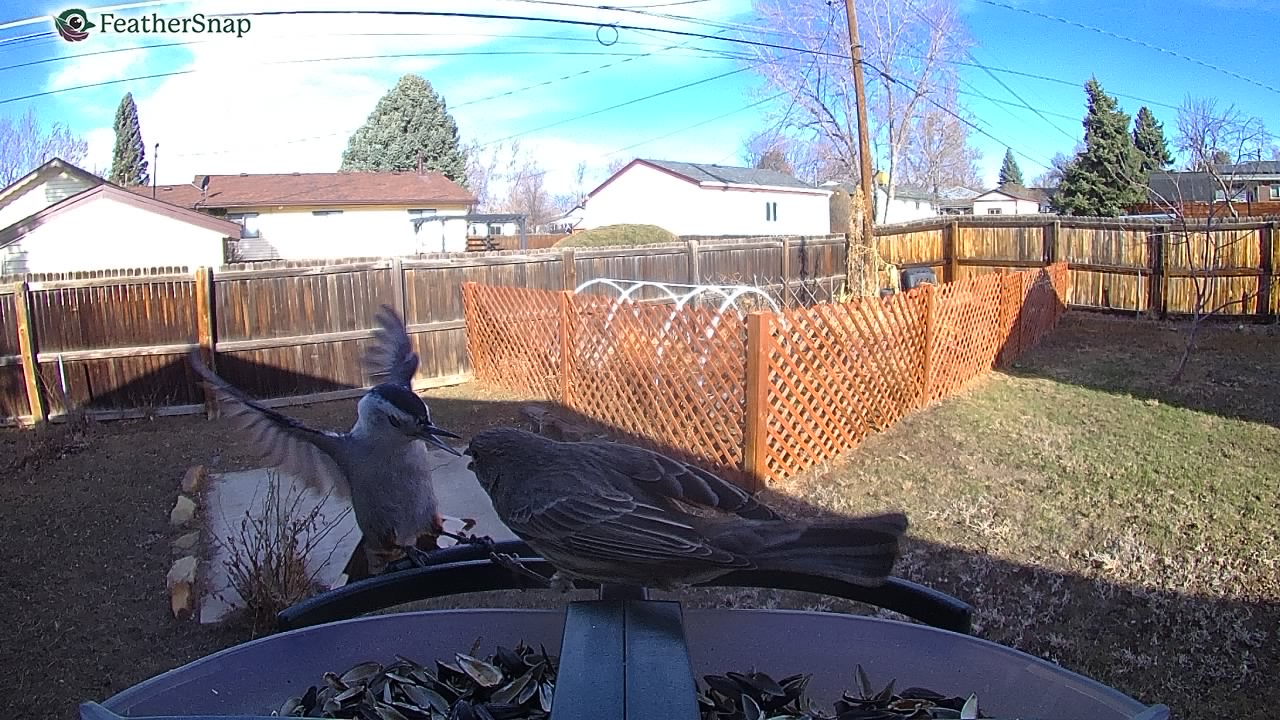
That said, at other times of day when the sun hits the feeder just right, I get crystal-clear images of the birds that visit the Scout. One neat feature of the app is that Feathersnap will let you know when your feeder is getting the most traffic: for my feeder, that happens around 11 a.m. At that time of day, the birds are backlit, so in the future, I’ll probably adjust the feeder accordingly or find a new position altogether.
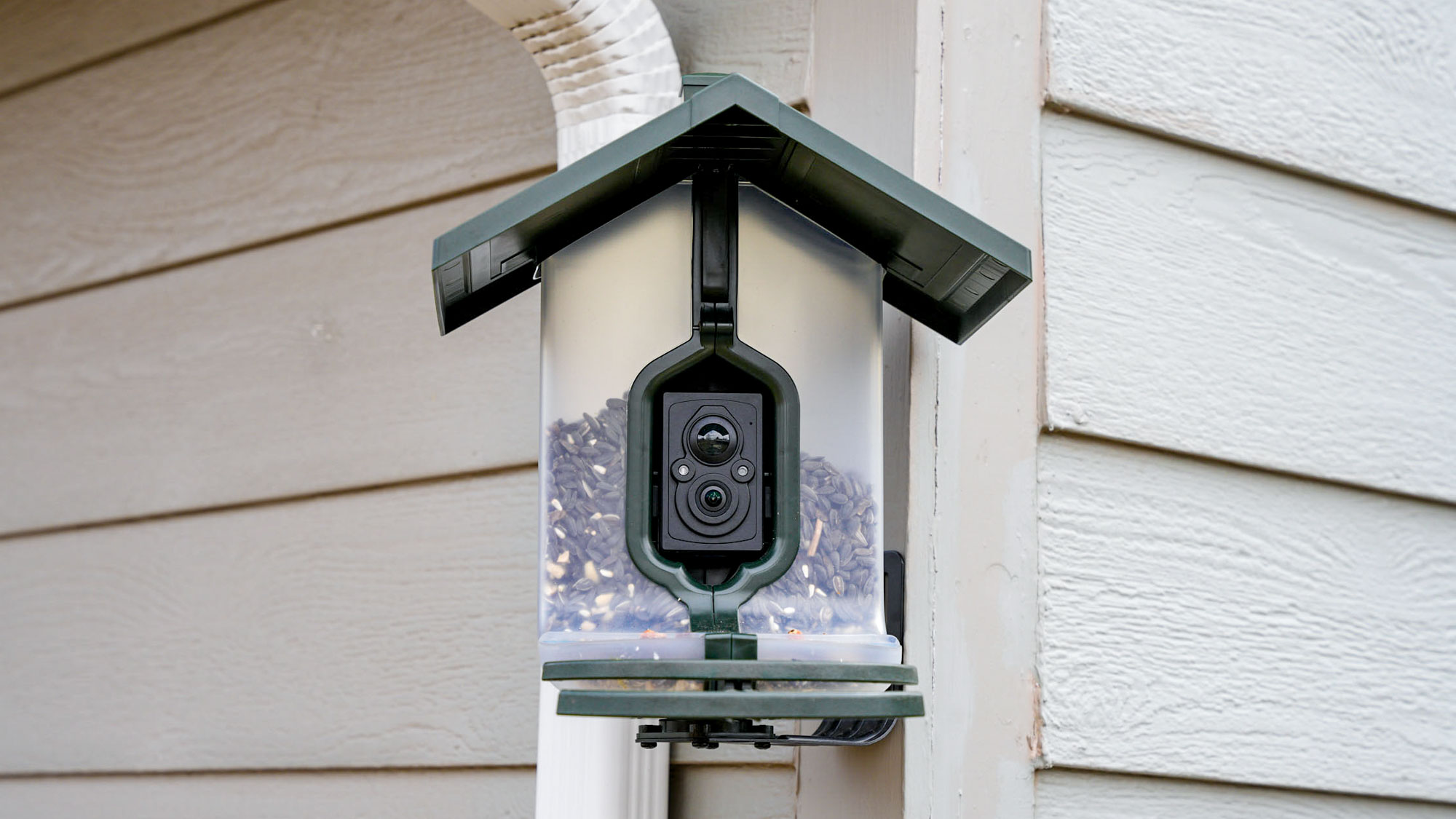
Moving the feeder side to side is pretty easy, so minor adjustments are no problem. Relocating the feeder entirely involves removing the screws on the mounting plate, and re-screwing it in a new location. Also pretty easy.
Feathersnap Scout Bird Feeder: App
The Scout feeder itself, while seemingly weatherproof and durable enough for years of use, isn’t worth the $179 price tag on its own. It’s just a plastic feeder, after all. The stars of the show are the camera and the companion app, which in tandem showcase the birds visiting the Scout.
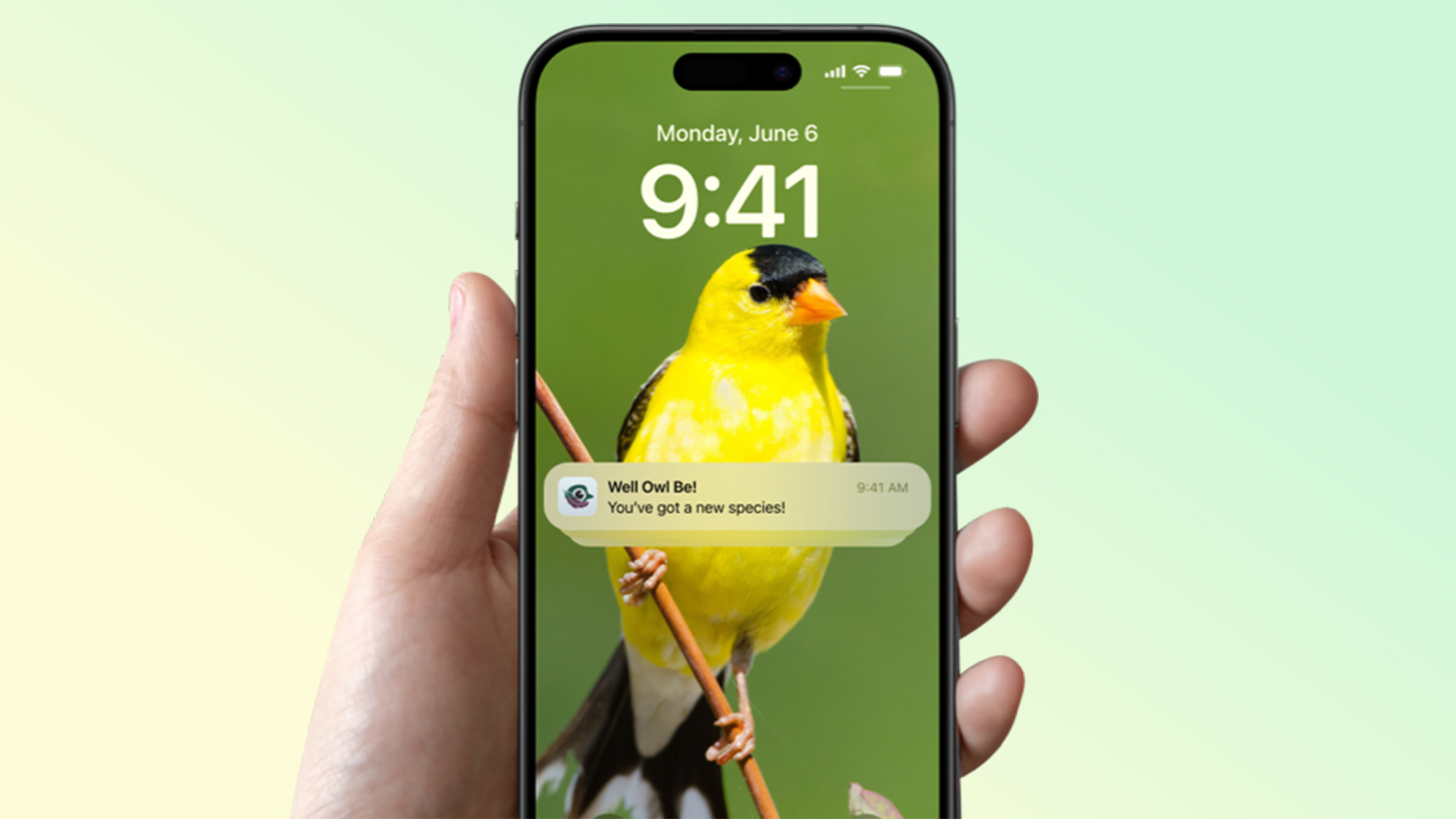
The main screen of the app is where you’ll see all your snaps of your feeder’s visitors. From there, you can save a photo you like, or request a video from FeatherSnap of that moment. The videos take a little time to show up in your video feed, but I’ve found them to be very clear and I enjoy hearing the birdsong too.
The My Feeder tab will show you relevant information about your account, as well as the status of the camera’s battery and the WiFi connection. Here, you can also click on the Live Feed button to see what’s happening at your feeder in real time.
The Bird Book tab is where you’ll find all your saved birds. When you save a photo, you can use the built-in AI bird identifier to sort your birds into categories. I’ve had very little luck with the AI tool, unfortunately. A lot of birds were simply misidentified, or the photos were apparently not clear enough for the AI tool to make a good identification. This was disappointing, honestly, and one of the main reasons why I upgraded to the paid subscription.
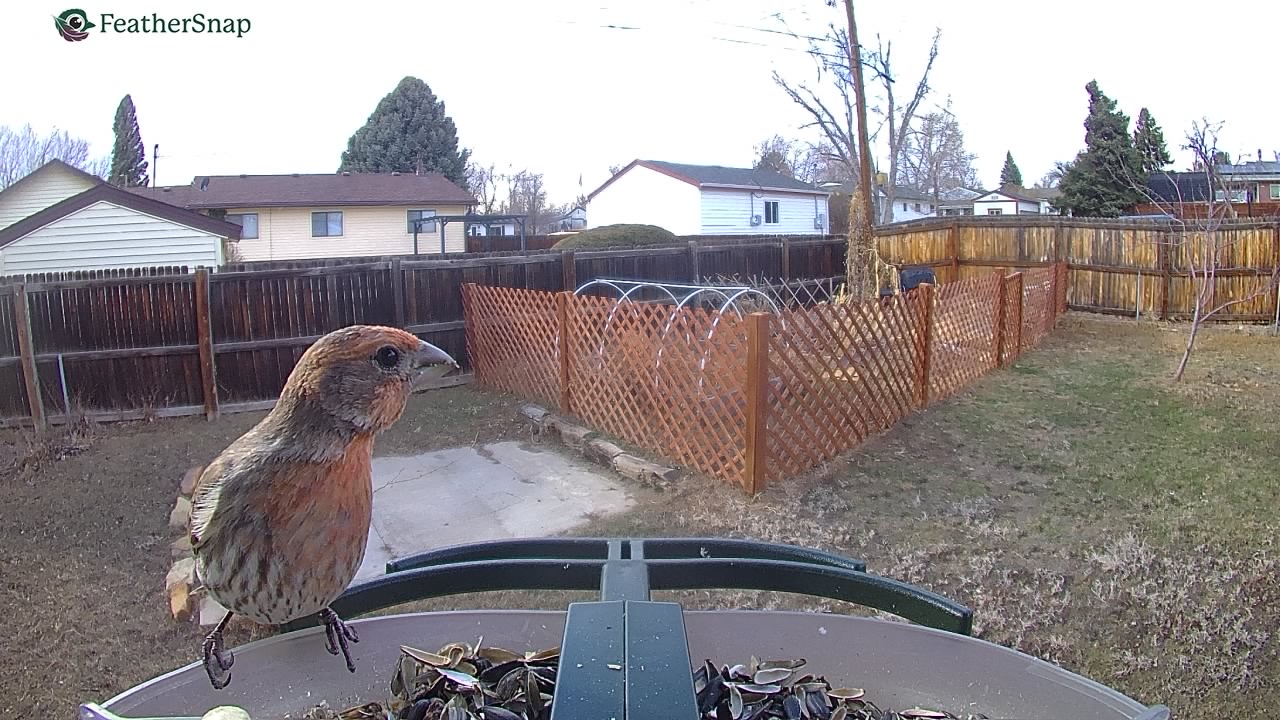
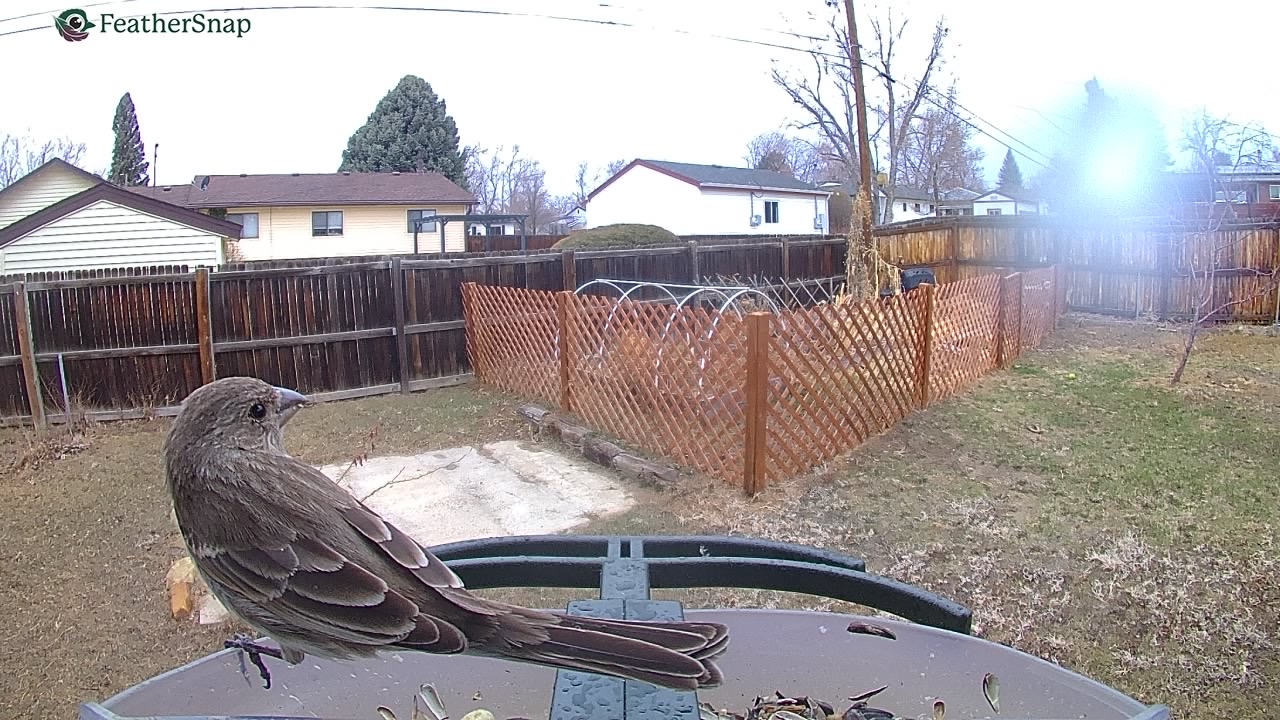
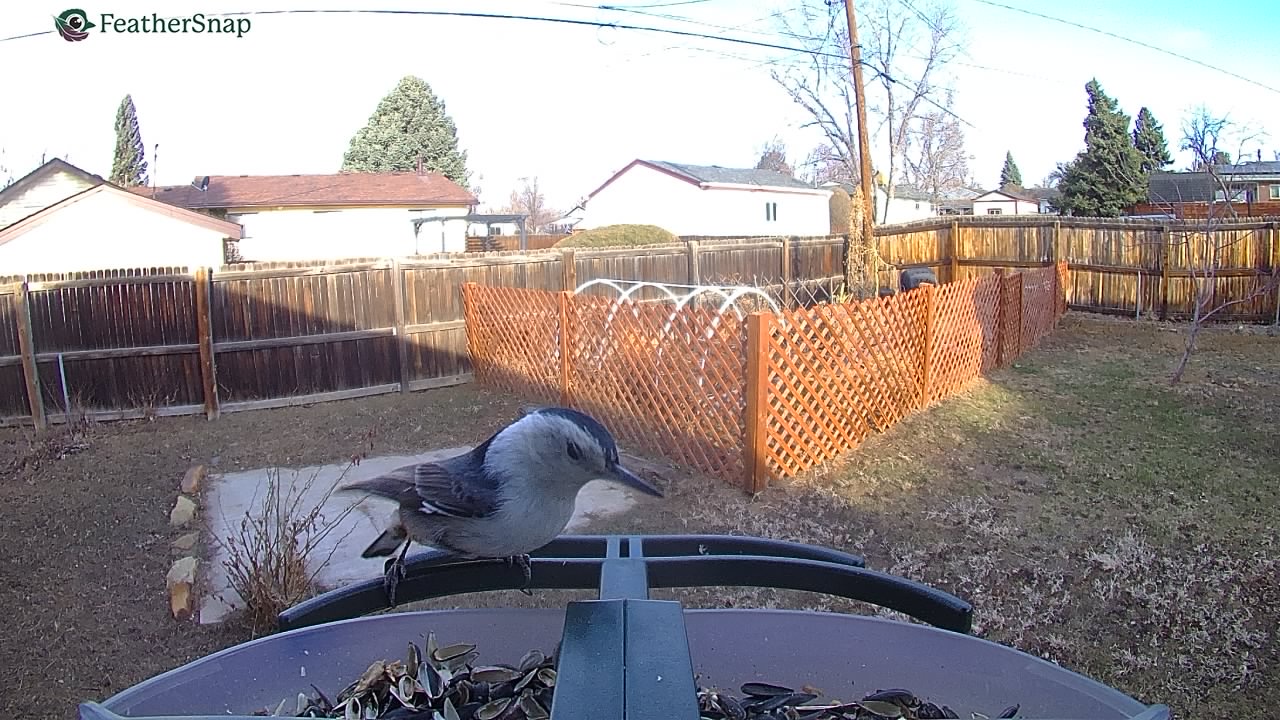
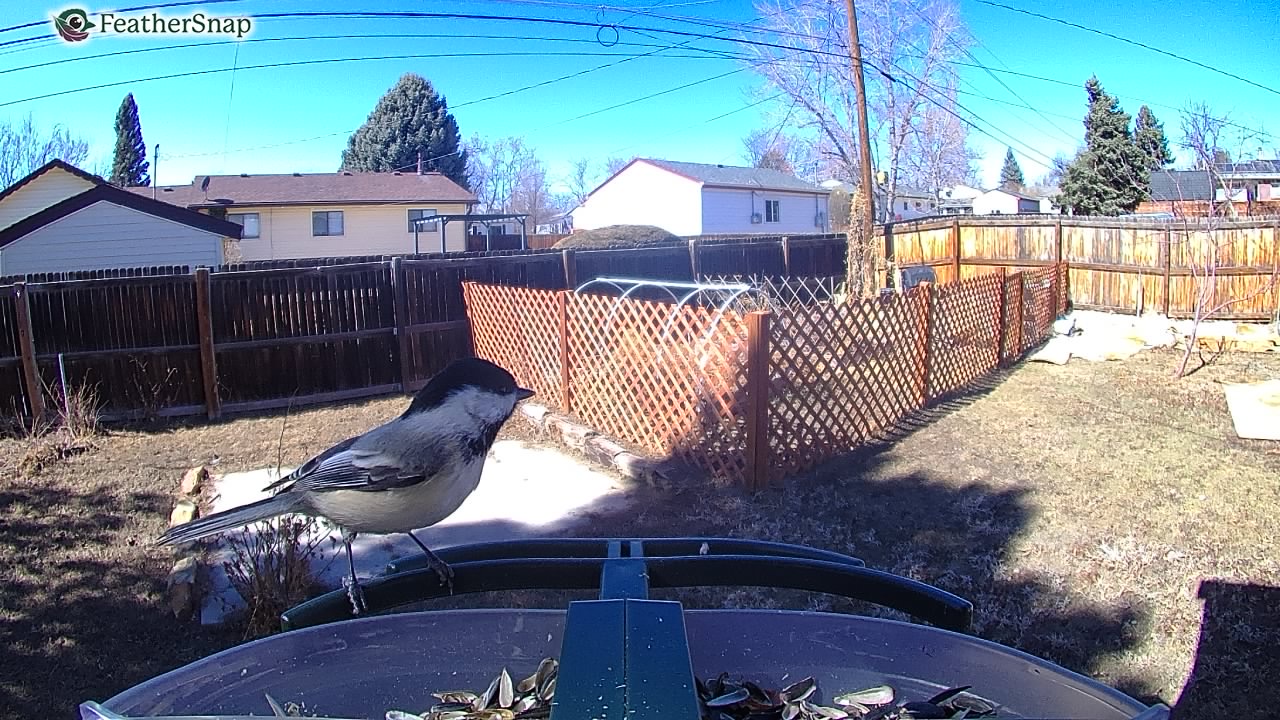
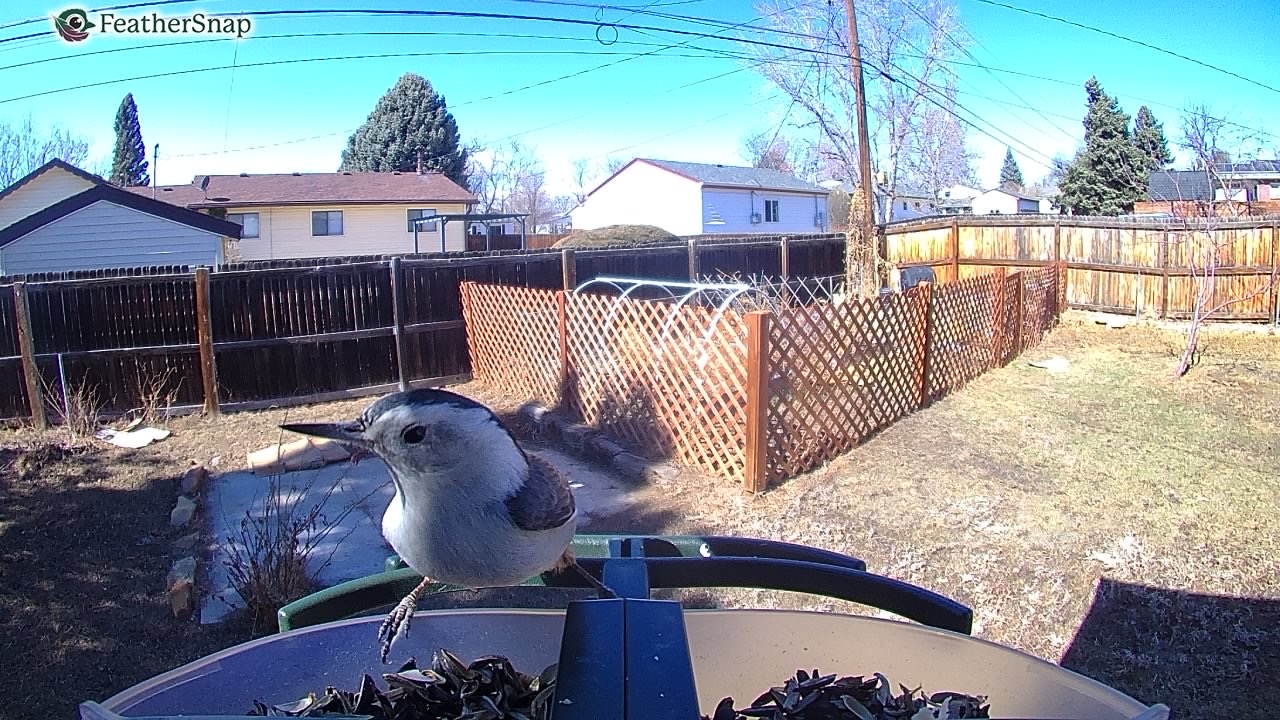
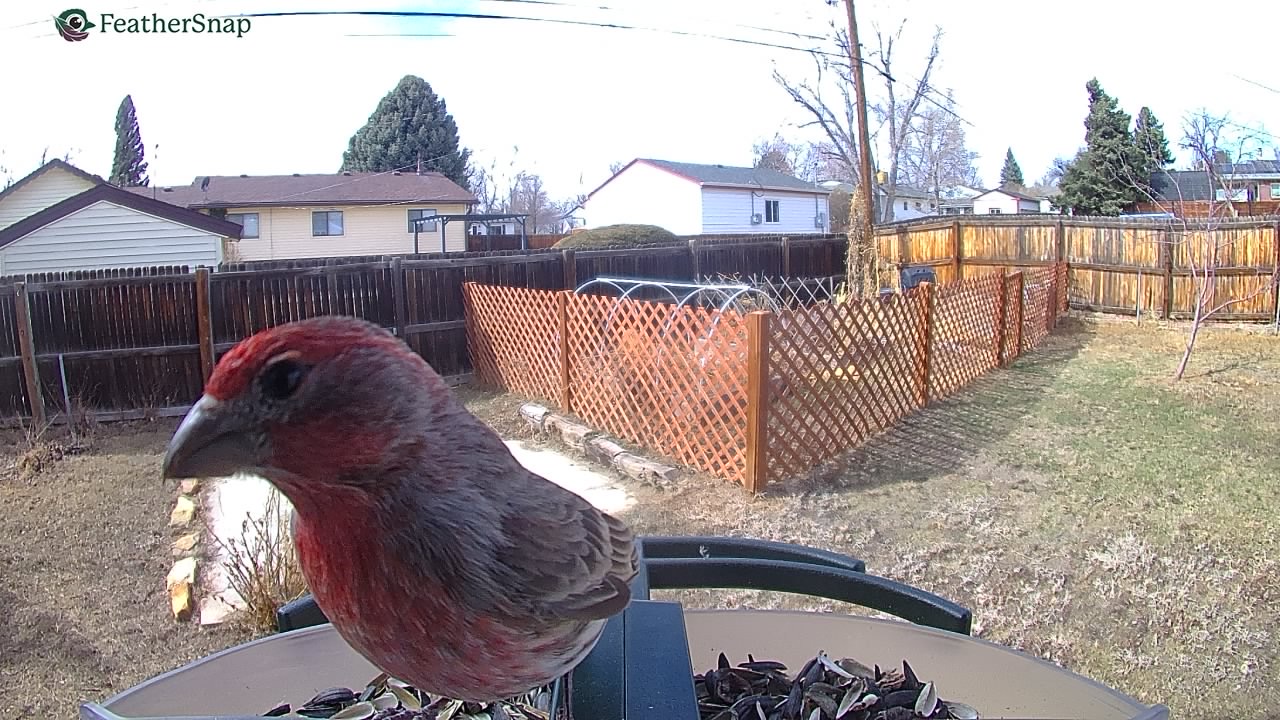

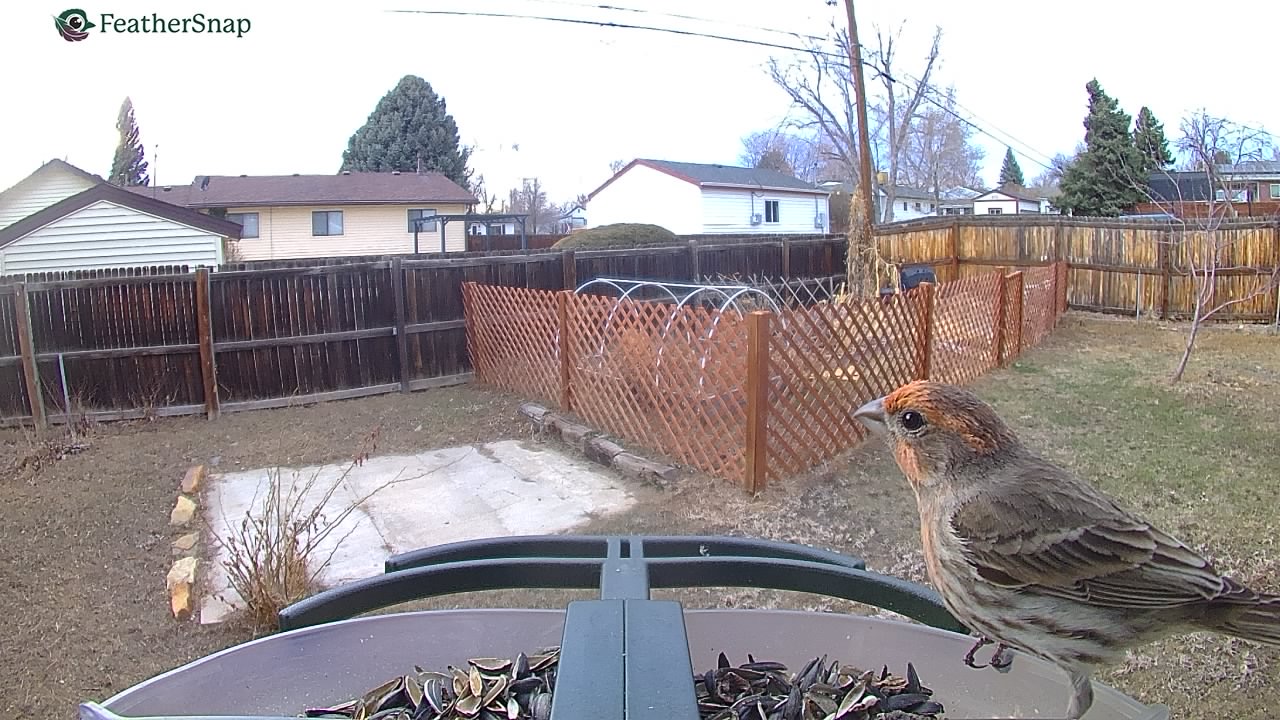
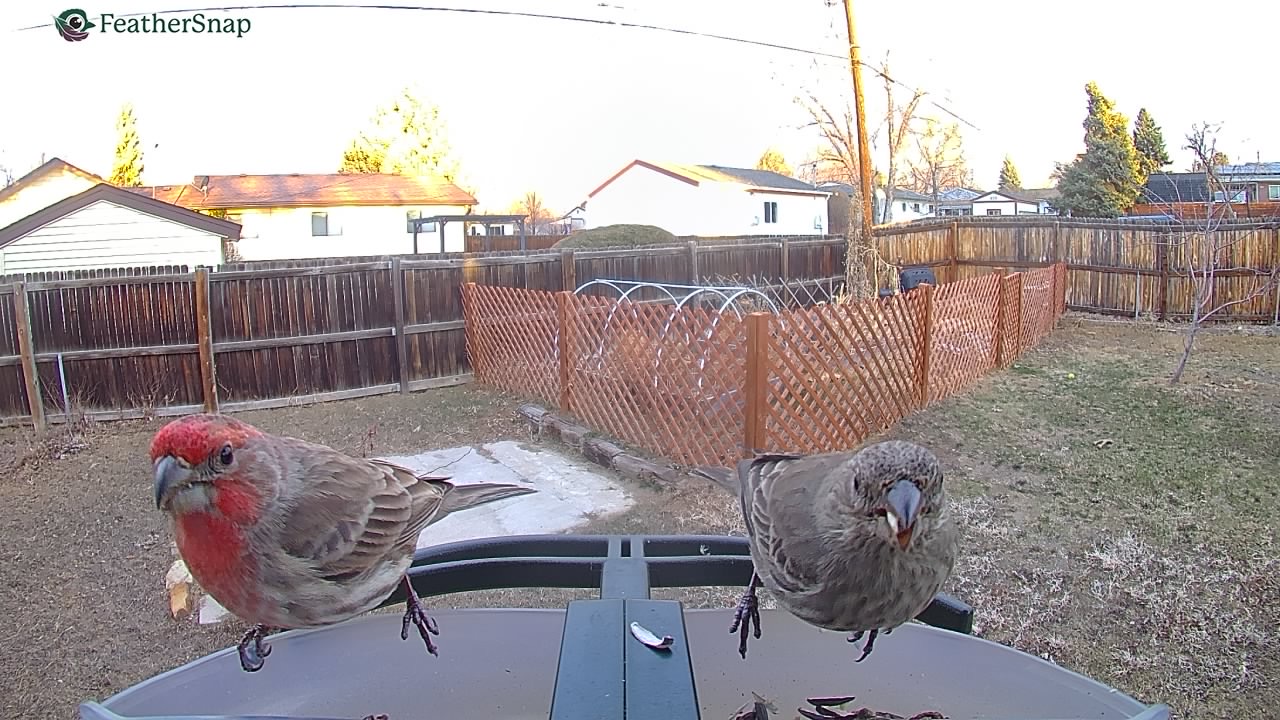
The Perch tab is where you’ll find badges that you’ve earned (essentially game-ifying the feeder for you), and the Snap Wrap, which gives you a fun weekly summary of what birds visited your feeder, how many, your top visitors, and more. This is also where you’ll learn what the peak feeding time is, and you can use this information to position your camera optimally.
And finally, there’s the Settings tab, which has all the boring stuff you’d expect in the Settings tab.
Overall, the app is intuitive and fun to use, but I’m largely disappointed in the AI bird identifier tool. I think if this is more accurate and streamlined, the FeatherSnap system becomes far more usable and fun.
Feathersnap Scout Bird Feeder: The competition
Bird Buddy is a close competitor with FeatherSnap. The Scout compares to Bird Buddy’s Smart Bird Feeder PRO, which costs $279 (as of this writing, it is on sale for $189). The solar option costs $349 (on sale for $219 as of this writing). So it’s consistently more expensive than the Feathersnap.
For the extra money, you get HD 2K video and photos, which is much better than the FeatherSnap’s resolution. And, you get that without a subscription.
The Bird Buddy also takes images more close-up to the bird visitors than the FeatherSnap does. The Scout’s field of view is ultra wide, so you get far more of the surrounding area, and the bird itself is smaller in the frame.
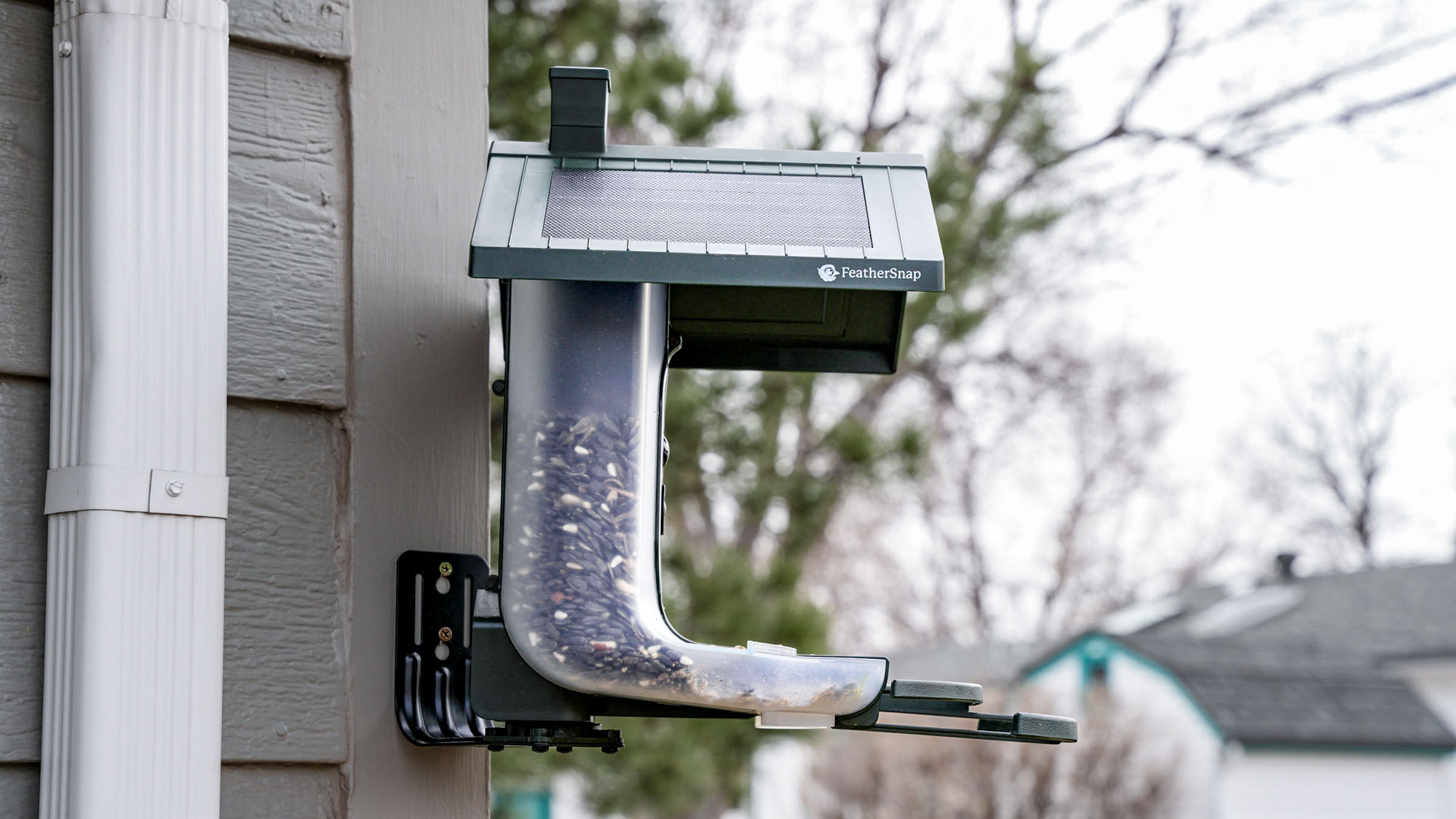
While I love the experience of the FeatherSnap, the Bird Buddy’s photos and videos soundly beat the FeatherSnap’s quality.
Feathersnap Scout Bird Feeder: Verdict
The FeatherSnap Scout is a fun addition to my backyard, and I’ve enjoyed looking at the birds that visit the feeder far more than I thought I would. Installation is quick and easy, and I rarely, if ever, think about the camera unit, since the solar panels charge it and keep it charged. It feels well-built and I can imagine getting many years of use out of it.
The camera produces clear images and videos, assuming you’ve positioned the feeder for optimal lighting. But the images are not as sharp or clear as what the Bird Buddy’s 2K camera can produce. And the app is easy to use and offers valuable information, as well as entertaining snaps of various feeder visitors.
Given the cost of the feeder itself, and the quality of the photos and videos compared to the FeatherSnap’s competition, I do feel as though the app features for which you need to pay a monthly fee should be included in the purchase price of the unit. And the AI tool needs a lot of refining to truly be useful. More often than not, the AI tool misidentified the birds that visited my feeder.
But aside from those drawbacks, the FeatherSnap Scout is a ton of fun, whether you’re an avid birder or just a novice interested in seeing the wildlife out your back window. It offers a way to come far closer to nature than you could in person, and truly study wild birds close up. As long as you’re not looking for the tops in AI identification, the Scout is a wonderful addition to the back yard.

Dan Cavallari is the former technical editor for VeloNews Magazine, who currently reviews electric bikes, bike lights, and other bike accessories for Tom's Guide. In addition to VeloNews, his work has appeared in Triathlete Magazine, Rouleur Magazine, CyclingTips.com, Road Bike Action, Mountain Bike Action, CycleVolta.com, Tomsguide.com, and much more. Dan also hosts two podcasts on his site, Slow Guy on the Fast Ride: One is about cycling and other outdoor activities, while the other looks at mental health issues. Most recently, Dan also covered the 2022 Tour de France. Dan lives outside of Denver, Colorado with his family.
You must confirm your public display name before commenting
Please logout and then login again, you will then be prompted to enter your display name.
